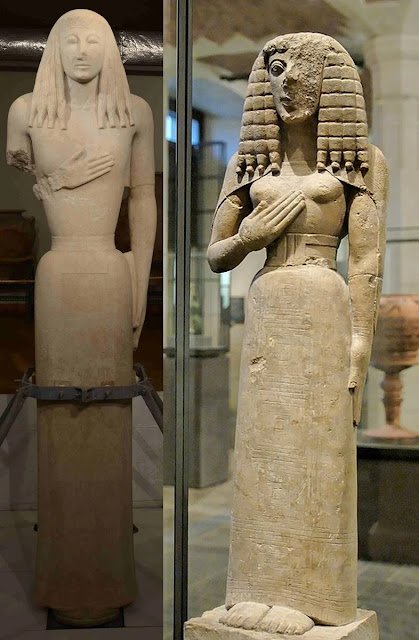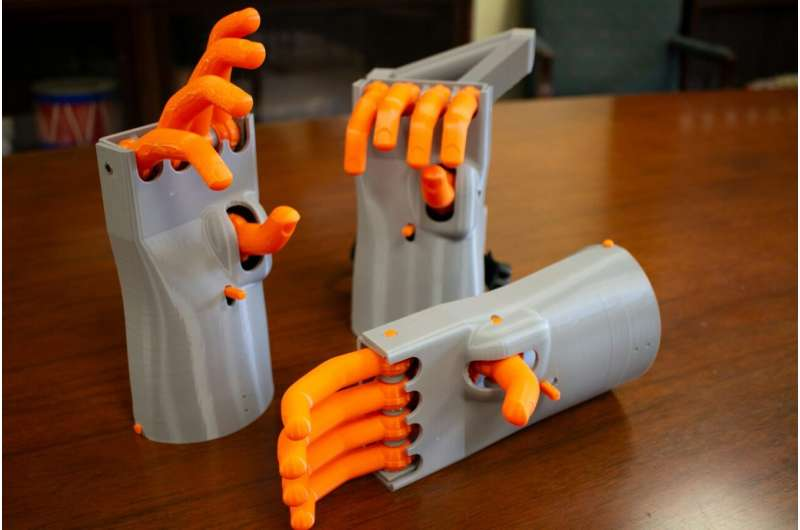A very interesting observation is made by the curator of the Greek National Gallery, Marilena Kassimati, about the “Kore of Thera”, which was found almost intact in the cemetery of the ancient city of Thera and is on display for the first time in the new Museum of Thera.
The Kore of Thera, a statue of the 7th century BC, came to light, in November 2000, during a rescue excavation in the cemetery of the ancient city of Thera, in southeastern Sellada, by Theraean archaeologist Charalambos Sigala.
She associates her with the "Lady of Auxerre" which has been on display at the Louvre since 1907 - indeed others associate her with the Kore of Eleutherna. It is no coincidence that the creator of the Eleftherna Museum, Dimitris Stampolidis, believes that the Dame d'Auxerre is from Eleftherna.
Kore of Eleutherna
Ms. Kassimati writes:
The resemblance of the "Daughter of Thera" (a work of early archaic sculpture, almost intact, of supernatural size, which came to light in November 2000 during excavations in the cemetery of the ancient city of Thera) with the "Lady of Auxerre", from 1907 in the Louvre (75 cm high), is obvious, at least for me.
It owes its conventional name to the local museum of Auxerre (Musée Saint-Germain), while to this day nobody knows exactly how it got there, broken into three parts. Its value was immediately recognised in the Louvre, it was welded and published by a French archaeologist that same year.
These and other statues represent a stylistic phase in early Archaic art referred to as "Daedalic", also commonly referred to as the Orientalist period. This type was particularly widespread in Crete and now we have a similar project in Thera.
The Lady of Auxerre (Dame d'Auxerre): The Daedalistic female statue from Crete that came back to life through the film footage of the movie "TROY"
The Lady of Auxerre graced the cinematic palaces in Wolfgang Petersen's film Troy, but unfortunately for only a few seconds. Arguably, the placement of a statue referring to the archaic period in a prehistoric Aegean palace is anachronistic, as are many other architectural details of the film's sets. Be that as it may, this unique find was "revived" by Hollywood and traveled around the world through film footage, giving an opportunity to lovers of ancient art to familiarize themselves with its symbolism and messages.










